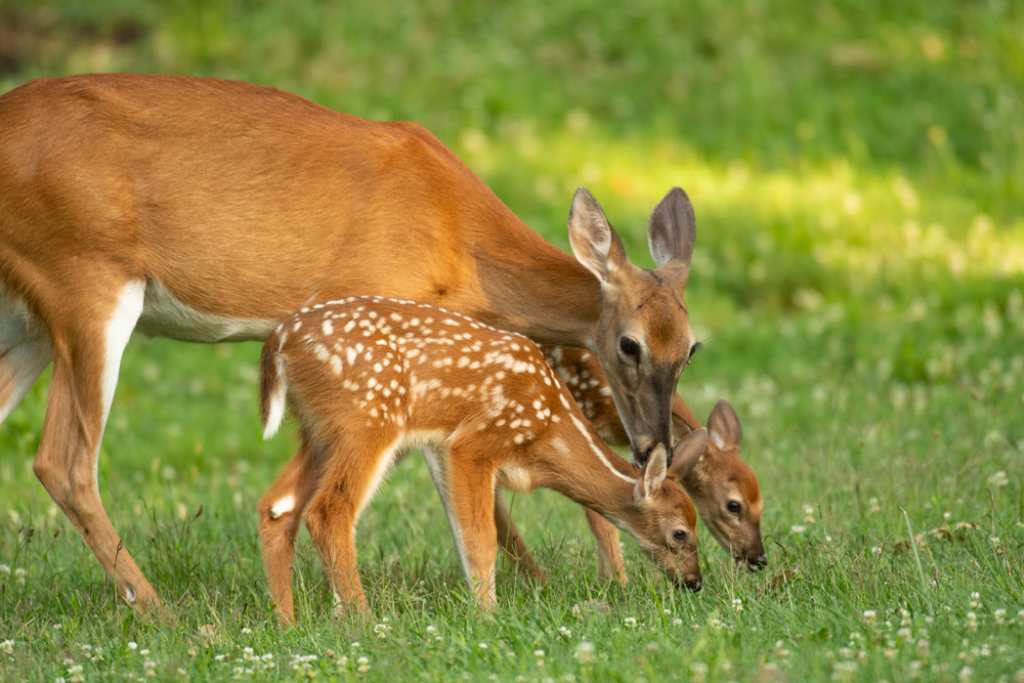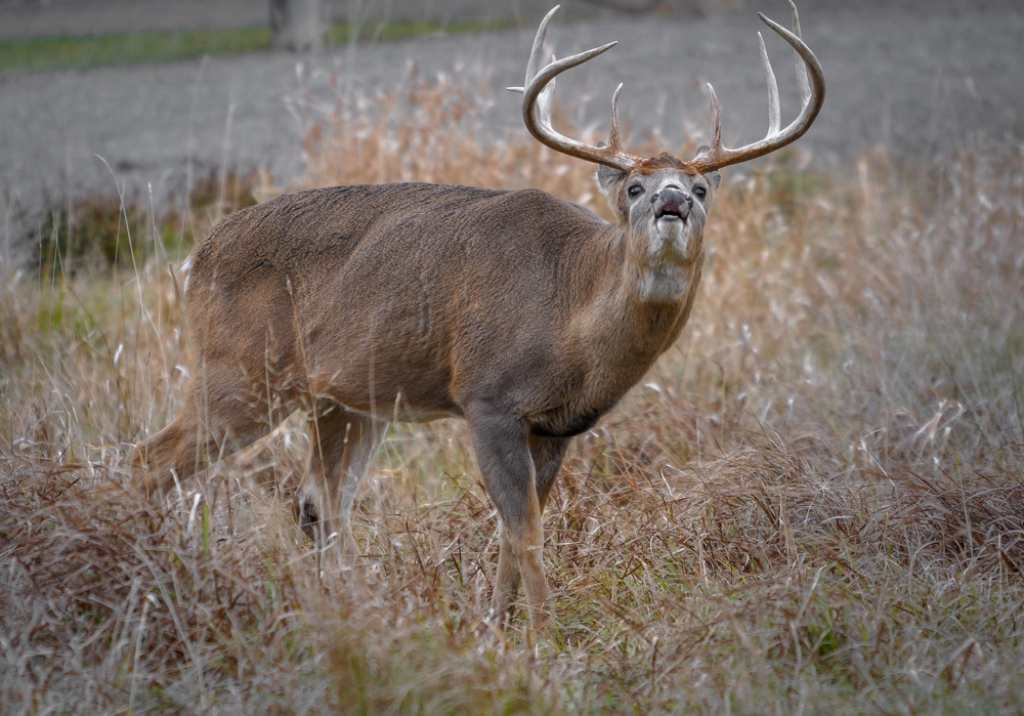Deer are many things. And while even the most seasoned hunters wouldn’t necessarily call them “loud”, the truth is that deer are vocal animals. Whitetail communication is complex and nuanced, involving deer call sounds as well as body language and scenting.
When it comes to vocal calls, “Deer use sounds to convey alarm, distress, social status, and aggression. Many sounds can only be heard less than 100 yards by humans; however, the snort can be heard much greater distances.”
Thankfully, unlike other game calls, some of the most common whitetail deer calls can be fairly easily mastered and duplicated for hunting purposes. Let’s dig a little deeper.
What Are Deer Calls & Why Are They Important in Hunting?
The science behind deer communication is still not fully understood. But we do know that calls are just one way deer communicate with each other.
Whitetails Unlimited sums it up this way in their enlightening piece “Deer Talk: A Field Guide to Whitetail Communication”: “...any “talk” between deer probably involves more than one type of communication. For example, an alarmed deer may stamp its foot (visual), snort (vocal), and release scent from its feet (chemical).”
Therefore learning all three common forms of communication between deer, which the above field guide splits into these sections, can increase your chances of filling your freezer next time you go hunting:
- Voices of the Deer (vocal communication)
- Common Scents (chemical communication)
- Body Language (visual communication)
We recommend reading the above guide or checking out our blog to learn more about chemical and visual communication. In the meantime, let’s dive deeper into the subtle art and science of mastering deer calls (vocal communication) for a more successful hunt.

Vocal Communication & More
There’s one in every group: you know, the guy that doesn’t speak up until he has something really important to say. That’s what most deer are like. As seasoned hunter Mark Kayser puts it in his article “The Subtleties Of Calling Deer”,
“Unlike cattle, geese, and some yapping dogs, whitetails save their vocal interchange for when it is truly needed. Thus, most of the time the audible clues of whitetails are unused or lost in the vastness of their environment. Even so, understanding a few subtle phrases could be the zenith moment that makes your hunt a success.”
In other words, you don’t need to become a skilled conversationalist to attract deer. In fact, mastering every single deer call would require learning 200-400 different sounds. Practically speaking, that’s just not feasible.
Rather, as expert hunters and EZ Grunter inventors Harold Knight and David Hale put it in a discussion with Bob Robb for Game and Fish magazine, learning basic woodsmanship is the first thing you should do. This includes doing things like:
- Attracting Deer With Scent Emulants: Hanging scent wicks in a 360-degree circle around your stand and combining this with aggressive calling
- Masking Your Scent: Spraying scent-control spray all around your stand upon arrival and then again throughout the day
- Hunting Remote Openings: “Our favorite stand locations are in funnels located between bedding thickets and preferred foods, or near water”, Hale says.
- Hunt from the Ground, Too: When using this tactic, Hale suggests remaining aware of the wind direction at all times using a wind checker.
In other words, learning to emulate deer calls is NOT a replacement for good woodsmanship, a shortcut to attracting deer more quickly, or a “silver bullet”. But once you’ve gotten the basics of good woodsmanship down, learning to call deer can vastly increase your odds during the hunt.
Living Legendary puts it this way:
“Calling has revolutionized the way I hunt whitetails and increased my success immensely. When I began calling deer, I only used antlers. Though there were successes, it wasn’t until I began using a grunt tube, alone and in conjunction with antlers that my success at luring deer close increased significantly. During the last 20 years, I’ve discovered that deer are more responsive to a call than anything else...I find that for every buck I rattle in, up to 20 will respond to grunting, bleating, and wheezing.”
David Hale is a little more conservative in his assessment of the efficacy of calls, but does admit that they are still an effective tool:
“Sometimes they [calls] work and sometimes they don’t...But we’ve [Hale & Knight] called in so many bucks over the years that we really do believe in them during the rut.”
So, now that we’ve established that deer calls are an important tool when used as an addition to your arsenal of hunting tips and best practices, following an understanding of overarching deer behavior and communication, here’s what you need to know about the different types of deer calls.
Types of Deer Calls
Though deer can vocalize hundreds of sounds, most are variations on these four, from what we understand about vocal deer communication & behavior. Therefore developing a solid understanding of both (method) how and when (situation) to use each of these three common deer calls can set you up for increased hunting success by attracting deer more easily:
- Bleats: Deer, particularly does, communicate with their fawns by using bleats. Bucks listen for this sound during the rut to find nearby females.
- Grunts: Grunts are very likely one of the deer vocalizations you’ll hear the most when out hunting whitetail. They often signify contentment.
- Snort-Wheezes: Aggressive bucks use this call as a challenge for other bucks to stay away.

Mastering the Different Types of Deer Calls
Learning how to emulate deer calls is step 1 in being able to effectively call deer during a hunt. But to truly master using different types of deer calls, you need to learn when and how to call deer with each type of call in addition to how to combine types of calls during different situations for various intended effects.
First things first: you will need to strategically position yourself and your hunting location in relation to deer in a spot such as a bluff, thicket, or riverbank. The key is to avoid being picked up by deer.
Once you’ve “set up shop” it’s time to learn each call.
- How to Master the Fawn & Doe Bleats: Using a bleat can or doe bleat call is one of the easiest and most effective ways to emulate deer bleats, which sound similar to a cow’s moo. When buck hunting during the beginning or middle of the rut, Primos Hunting recommends you “start with a few bleat can sounds, wait a few seconds, then do it once more before making the sound of another buck defending a doe, with a grunt call.” It’s important not to overdo it. Wait 20-30 minutes between calls.
- How to Master the Grunt: In a tree stand, let 2-3 grunts out using a grunt call device every 20-30 minutes, since deer can hear grunt calls from about 100 yards away. Or, if you see a deer in a distance heading away from you, do 1-2 “hail grunts” (long blasts) to try to get the deer's attention, followed by several short, fast “tending grunts”.
- How to Master the Snort-Wheeze: The snort-wheeze call is the “must-have call” of Rich Miller at Night & Hale, which “makes a deer [particularly older bucks] react like no other” [emphasis added]. If you don’t have a snort-wheeze call device, you can simulate this call in a pinch by clenching your teeth together while puckering your lips, then exhaling 3 short breaths while holding your mouth in that position to create the snort-wheeze sound.
The Importance of Rattling
Using a buck bag or rattling horns is yet another proven auditory cue to attract deer. It can be especially helpful when:
- Rattling in the morning vs. midday or in the evening
- On cloudy days with low temperatures and little to no wind
- Hunting in a treestand vs. on the ground
- Rattling for 2-3 minutes quietly followed by 7-8 minutes of silence and then another 2-3 minutes as loudly as you can
Learn More About How to Attract Deer
Discover other hunting tips and tricks on our blog.
Looking for other proven ways to attract deer beyond mastering deer calls, learning deer body language, and utilizing deer scenting/human masking odor-control techniques? Check out Tectonic’s Daytime Deadfall Deer Feeder.
With its large capacity, our deer feeder keeps whitetail coming back for more. With its digital battery-powered timer, it makes training deer to eat during hunting hours easier than ever.

